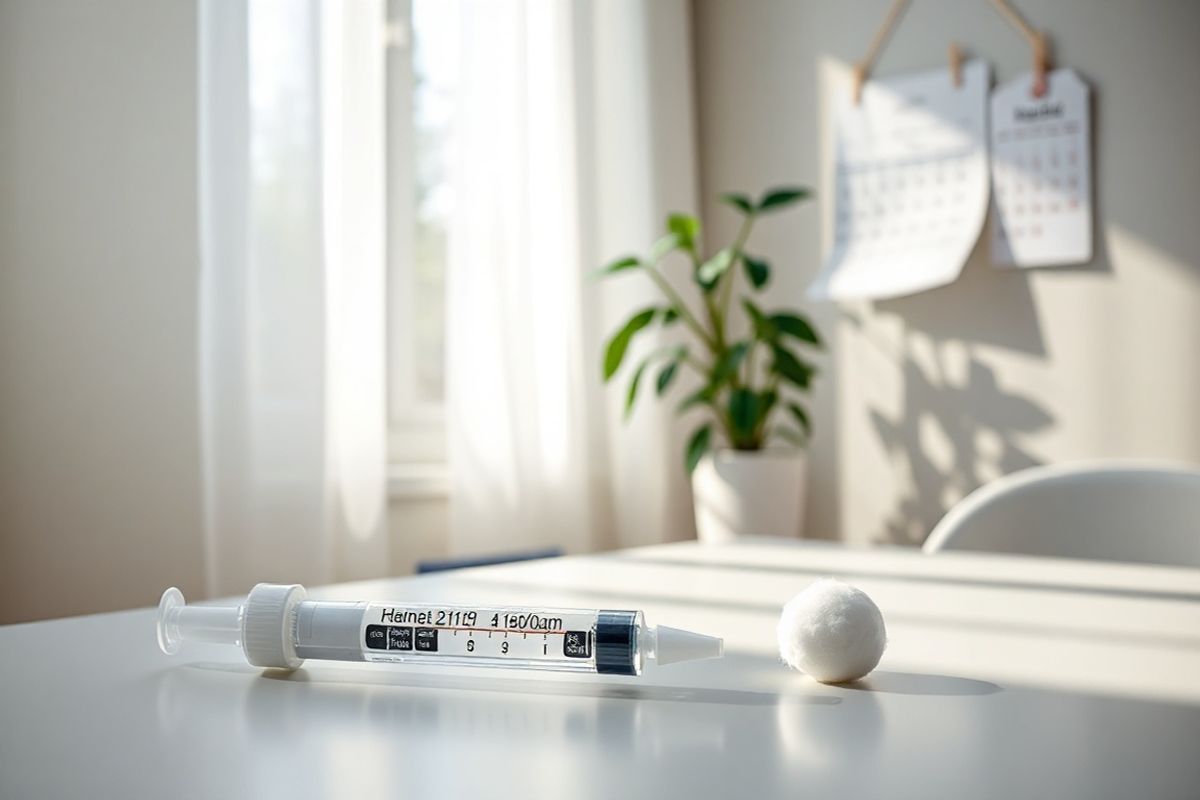Table of Contents
Understanding Repatha: What You Need to Know Before Injection

Repatha, generically known as evolocumab, is a monoclonal antibody that plays a crucial role in managing cholesterol levels in patients with hyperlipidemia. By inhibiting PCSK9 (proprotein convertase subtilisin/kexin type 9), Repatha effectively decreases levels of LDL cholesterol, which is a key factor in cardiovascular disease. Understanding how Repatha works is essential for patients utilizing this medication, particularly regarding its administration and timing. Repatha is typically administered via subcutaneous injection, which can be performed in various settings, including at home after adequate training from healthcare professionals.
Before starting Repatha, patients should ensure they are aware of their cholesterol levels and any other underlying health conditions. It is also necessary to discuss any concurrent medications, as interactions may affect the outcomes of Repatha therapy. Initial discussions with a healthcare provider will help set expectations for cholesterol reduction and assess potential side effects, such as injection site reactions or flu-like symptoms (Park et al., 2024).
The Importance of Injection Scheduling for Optimal Results

Injection timing is crucial for ensuring the effectiveness of Repatha. The standard regimen for Repatha is either a biweekly injection of 140 mg or a monthly dose of 420 mg. Adhering to the prescribed schedule is essential to maintain the maximum therapeutic effects of the drug. Studies have demonstrated that consistent administration correlates with significant reductions in LDL cholesterol levels, which can lead to a decreased risk of cardiovascular events (Khan et al., 2024).
Furthermore, the timing of the injections can also influence patient adherence. Establishing a routine for injections—such as choosing a specific day of the week or month—can help patients integrate this treatment into their daily lives. For those receiving Repatha at home, ensuring that the injection is administered at the same time each cycle can foster better adherence and monitoring of cholesterol levels, ultimately leading to improved health outcomes.
How to Determine Your Ideal Repatha Injection Schedule
Determining an ideal injection schedule involves several factors, including individual health needs, lifestyle, and physician recommendations. For patients new to Repatha, the following steps can help establish a personalized injection plan:
-
Consult Your Healthcare Provider: Discuss your cholesterol levels, medical history, and any other medications you are taking. Your healthcare provider can provide tailored advice on the best injection schedule.
-
Consider Your Routine: Choose a schedule that fits seamlessly into your lifestyle. For example, if weekends are less hectic, a Saturday injection may be ideal.
-
Utilize Reminder Systems: Whether through mobile apps, calendars, or pill organizers, setting reminders can help ensure regular administration of Repatha.
-
Monitor Your Progress: Regular follow-ups with your healthcare provider to monitor cholesterol levels and adjust the injection schedule if necessary will ensure optimal treatment efficacy.
-
Be Aware of Side Effects: Keeping a log of any side effects or reactions can help you and your healthcare provider make informed decisions about your therapy.
By taking these factors into account, patients can develop an injection schedule that aligns with their health goals and daily life.
Best Practices for Administering Repatha Injections Safely
Administering Repatha injections properly is vital for maximizing their benefits and minimizing potential side effects. Here are best practices to follow:
-
Preparation: Before administering the injection, wash your hands thoroughly and ensure the injection site is clean. Choose a spot on the abdomen, thigh, or back of the arm that is free from scars or bruises.
-
Check the Medication: Inspect the Repatha prefilled syringe for any discoloration or particles. Only use the medication if it is clear and colorless.
-
Proper Injection Technique: Hold the syringe at a 90-degree angle to the skin and insert the needle quickly and firmly. After inserting the needle, inject the solution slowly and steadily. Withdraw the needle and apply pressure to the injection site with a cotton ball or gauze.
-
Disposal: Safely dispose of the used syringe in a sharps container. This helps prevent needle-stick injuries and ensures proper disposal.
-
Monitor for Reactions: After the injection, observe the site for any redness, swelling, or pain. Contact a healthcare provider if severe reactions occur.
Following these best practices can help ensure safe and effective Repatha administration.
Common Questions About Repatha Injection Timing and Frequency
How often should I take Repatha?
Repatha is typically administered either biweekly (140 mg) or monthly (420 mg), depending on your healthcare provider’s recommendation.
Can I change my injection schedule?
Any changes to your injection schedule should be discussed with your healthcare provider to ensure continued effectiveness and safety.
What should I do if I miss an injection?
If you miss a dose, administer Repatha as soon as you remember. If it is almost time for your next dose, skip the missed dose and resume your regular schedule. Do not double the dose.
Are there specific times of day that are better for injections?
The timing of injections can vary based on personal preference. However, consistency is key, so try to administer it at the same time each week or month.
What are the potential side effects of Repatha?
Common side effects include injection site reactions, flu-like symptoms, and muscle pain. Contact your healthcare provider if you experience severe or persistent side effects.
References
-
Park, G. C., Bang, S.-Y., Kim, J. M., Shin, S.-C., Cheon, Y.-i., Kim, K. M., Park, H., Sung, E.-S., Lee, M., Lee, J.-C., & Lee, B.-J. (2024). Inhibiting Ferroptosis Prevents the Progression of Steatotic Liver Disease in Obese Mice. Antioxidants, 13(11), 1336. https://doi.org/10.3390/antiox13111336
-
Khan, N. M., Clifton, K. B., Lorenzo, J., Hansen, M. F., & Drissi, H. (2024). Characterization of Spirulina‐derived extracellular vesicles and their potential as a vaccine adjuvant. PMC Antioxidants (Basel). https://pubmed.ncbi.nlm.nih.gov/11635480/
-
Kim, J. H., Cho, H., Kwon, Y., & Lee, B. J. (2024). Enhanced osteogenic potential of iPSC-derived mesenchymal progenitor cells following genome editing of GWAS variants in the RUNX1 gene. Bone Research. https://doi.org/10.1038/s41413-024-00369-x



